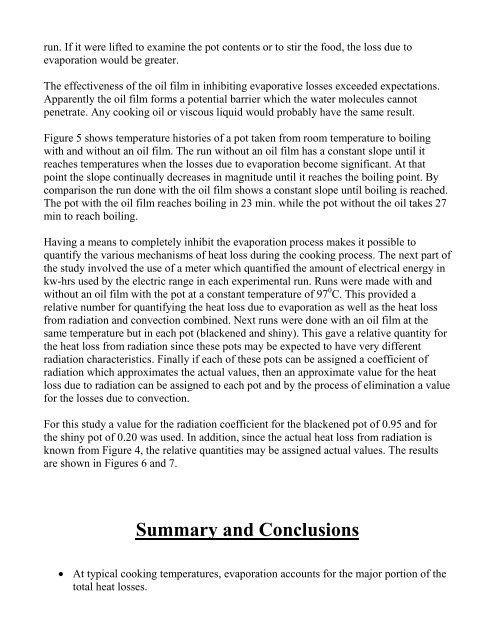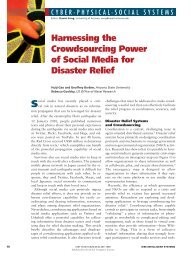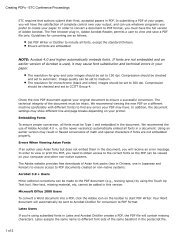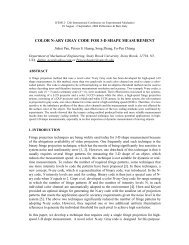Heat Losses In A Cook Pot While Simmering
Heat Losses In A Cook Pot While Simmering
Heat Losses In A Cook Pot While Simmering
You also want an ePaper? Increase the reach of your titles
YUMPU automatically turns print PDFs into web optimized ePapers that Google loves.
un. If it were lifted to examine the pot contents or to stir the food, the loss due to<br />
evaporation would be greater.<br />
The effectiveness of the oil film in inhibiting evaporative losses exceeded expectations.<br />
Apparently the oil film forms a potential barrier which the water molecules cannot<br />
penetrate. Any cooking oil or viscous liquid would probably have the same result.<br />
Figure 5 shows temperature histories of a pot taken from room temperature to boiling<br />
with and without an oil film. The run without an oil film has a constant slope until it<br />
reaches temperatures when the losses due to evaporation become significant. At that<br />
point the slope continually decreases in magnitude until it reaches the boiling point. By<br />
comparison the run done with the oil film shows a constant slope until boiling is reached.<br />
The pot with the oil film reaches boiling in 23 min. while the pot without the oil takes 27<br />
min to reach boiling.<br />
Having a means to completely inhibit the evaporation process makes it possible to<br />
quantify the various mechanisms of heat loss during the cooking process. The next part of<br />
the study involved the use of a meter which quantified the amount of electrical energy in<br />
kw-hrs used by the electric range in each experimental run. Runs were made with and<br />
without an oil film with the pot at a constant temperature of 97 0 C. This provided a<br />
relative number for quantifying the heat loss due to evaporation as well as the heat loss<br />
from radiation and convection combined. Next runs were done with an oil film at the<br />
same temperature but in each pot (blackened and shiny). This gave a relative quantity for<br />
the heat loss from radiation since these pots may be expected to have very different<br />
radiation characteristics. Finally if each of these pots can be assigned a coefficient of<br />
radiation which approximates the actual values, then an approximate value for the heat<br />
loss due to radiation can be assigned to each pot and by the process of elimination a value<br />
for the losses due to convection.<br />
For this study a value for the radiation coefficient for the blackened pot of 0.95 and for<br />
the shiny pot of 0.20 was used. <strong>In</strong> addition, since the actual heat loss from radiation is<br />
known from Figure 4, the relative quantities may be assigned actual values. The results<br />
are shown in Figures 6 and 7.<br />
Summary and Conclusions<br />
• At typical cooking temperatures, evaporation accounts for the major portion of the<br />
total heat losses.
















